Ultrafine powder milling technology is called a cross-century high-tech by scientists worldwide. After refinement, material properties change significantly. Optical, electrical, magnetic, and mechanical properties are affected. Thermal, surface, and interface characteristics also change. Extraordinary effects are often achieved in use.
Ultrafine powder milling is usually divided into micron-grade, submicron-grade and nano-grade powders. The international scientific community usually calls ultrafine powders with a particle size greater than 1μm micron-grade powders. Powders with a particle size of 0.1-1μm (i.e. 100nm-1000nm) are called submicron-grade powders. Powders with a particle size of 0.001-0.1μm (i.e. 1nm-100nm) are called nano-grade powders (also known as nanomaterials). In a broad sense, nanomaterials refer to materials with at least one dimension in the nanometer size.
Ultrafine powder milling technology refers to the preparation and use of the above ultrafine powder and related technologies. Its research content includes ultrafine powder preparation technology, classification technology, separation technology, drying technology, transportation, mixing and homogenization technology, surface modification technology, particle composite technology, detection technology, packaging, storage and transportation and application technology, safety technology in the preparation and storage and transportation process, etc.
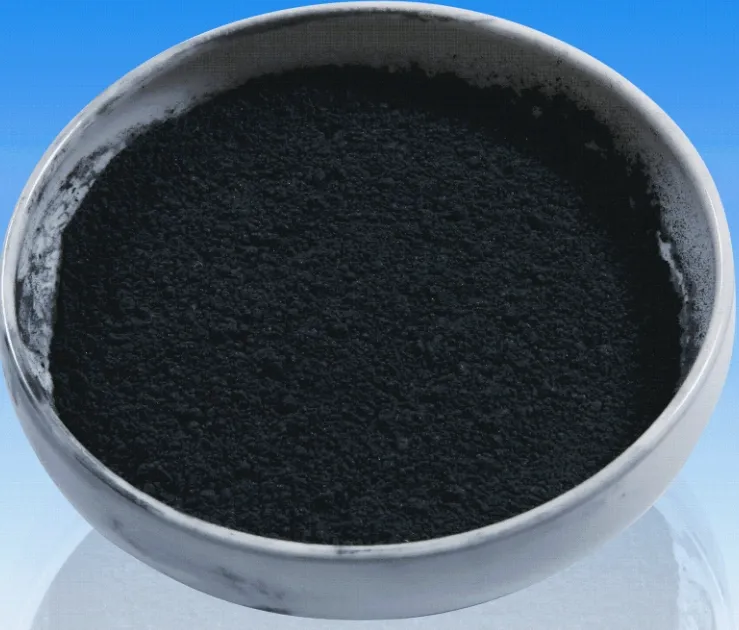
Characteristics of ultrafine powder
- It has a huge specific surface area. As particle size decreases, total atoms per particle reduce. Surface atom count increases rapidly with smaller particles. As specific surface area increases, surface energy also rises.
- Low melting point, unstable chemical properties.
- Easy to form agglomerates. Because the particles are small and have large surface energy, the particles tend to automatically aggregate to form larger particles to reduce the surface energy. This property brings great difficulties to the preparation of ultrafine powders. In order to prevent agglomeration, polymers or electrolyte ions are usually added as protective agents.
- Strong light absorption. Bulk metals have low visible light absorption, strong reflectivity, and present different lusters. However, metal nanopowders have strong visible light absorption, low reflectivity, and are almost all black, and the light absorption band is blue-shifted.
- Nanoparticles show superparamagnetism or high coercivity at critical sizes. For example, α-iron, Fe3O4, α-Fe2O3, and Ni particles become superparamagnetic when their particle sizes are 5 nm, 16 nm, 20 nm, and 15 nm, respectively. Iron-based nanoparticles have much stronger magnetism than bulk materials. They exhibit superparamagnetism or high coercivity. Ultrafine iron powder (10 nm) is a single magnetic domain. It can act as a data unit in high-density magnetic storage devices.
- Good thermal conductivity. Ultrafine powder has almost no thermal resistance at low temperatures and has excellent thermal conductivity.
- Metal micropowders show a sharp drop in conductivity. Non-metal powders show a sharp increase in conductivity. Silver powder at 10–15 nm becomes non-conductive. SiO₂ at 15–20 nm becomes conductive.
- Mechanical properties are doubled. The hardness of copper with a particle size of 6 nm is 500% higher than that of the bulk copper.
How to choose ultrafine grinding process?
Mechanical ultrafine grinding targets particle size d97 ≤ 10μm. It includes both dry and wet processing methods.
The dry ultrafine grinding process is a widely used ultrafine grinding process for hard and brittle materials. The production process is short and no subsequent filtration, drying and other dehydration process equipment are required when producing dry powder. Therefore, it has the characteristics of simple operation, easy control, low investment and low operating cost.
Wet ultrafine grinding uses water as a grinding aid. Wet grinding helps powder dispersion. Water’s high density improves fine classification. It offers high efficiency, fine size, and narrow distribution. Producing dry powder needs filtration and drying equipment. Dried powder may agglomerate and require deagglomeration. The process needs more equipment and is more complex.
How to choose ultrafine powder grinding equipment ?
Equipment selection is critical for ultrafine grinding. It depends on material properties like hardness, density, moisture, and feed size. Also affected by throughput, product fineness, and particle size distribution. Purity, particle shape, and process setup also matter. Equipment must meet product size, capacity, and max feed size requirements.
For bulk industrial mineral ultrafine powders, like heavy calcium carbonate, talc, kaolin, and wollastonite. Dry ultrafine grinding equipment should be prioritized due to their lower unit value. Wet ultrafine grinding equipment is suitable for fine grinding of various hardness materials.
Air jet mills are one of the main ultrafine powder grinding equipment. They are ideal for fine, high-purity, and high-value materials. They can produce powders with d97 = 3–5μm. Output ranges from dozens of kilograms to several tons per hour. Used for non-metallic minerals like talc, graphite, wollastonite, and kaolin. Also used for abrasives, chemicals, pigments, pharmaceuticals, metals, and rare earths.
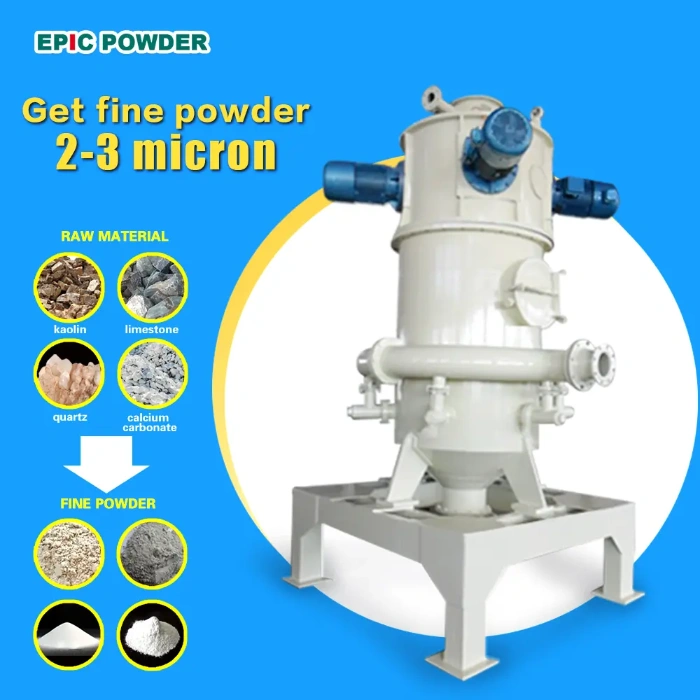
Air Classifier mills are widely used in the non-metallic mineral industry. Commonly used for coal-based kaolin, calcite, marble, chalk, talc, and steatite. Also used for chemicals and pesticides in ultrafine grinding. Typical product fineness reaches d97 = 10μm (1250 mesh). With high-performance classifiers, products of d97 = 5–7μm can be produced.
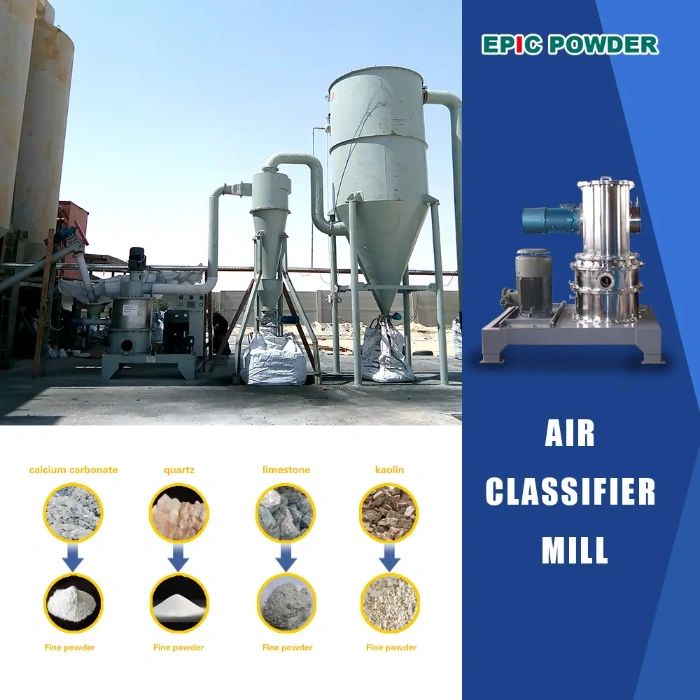
Ball mills are widely used for kaolin, heavy calcium carbonate, mica, and talc. They use balls or steel segments as grinding media. The product particle size distribution is generally wide. They are often used in closed-circuit grinding with classifiers. This ball mill-classifier dry closed-circuit process is used for ultrafine heavy calcium carbonate production. Feed size ≤5mm, with product fineness of d97 = 5–45μm.
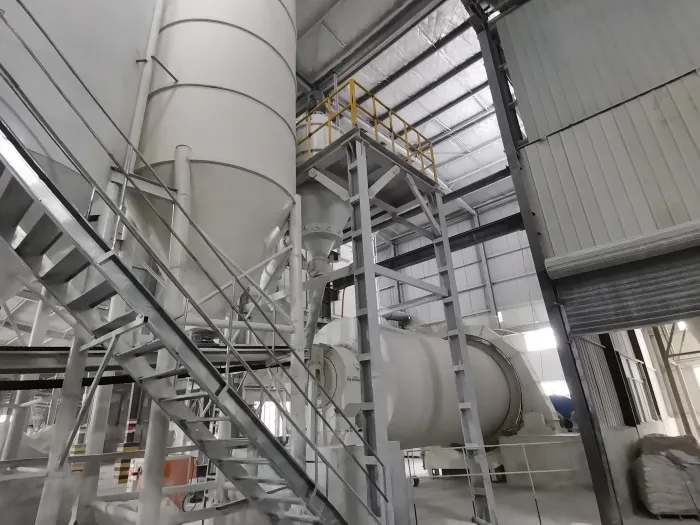
The turbo mill is a new dry fine and ultrafine powder milling equipment developed in China. It is suitable for grinding limestone, calcite, marble, talc, wollastonite, kaolin, barite, quartz, and feldspar. Feed size ≤30mm, with product fineness adjustable between d97 = 40–10μm (400–1250 mesh).
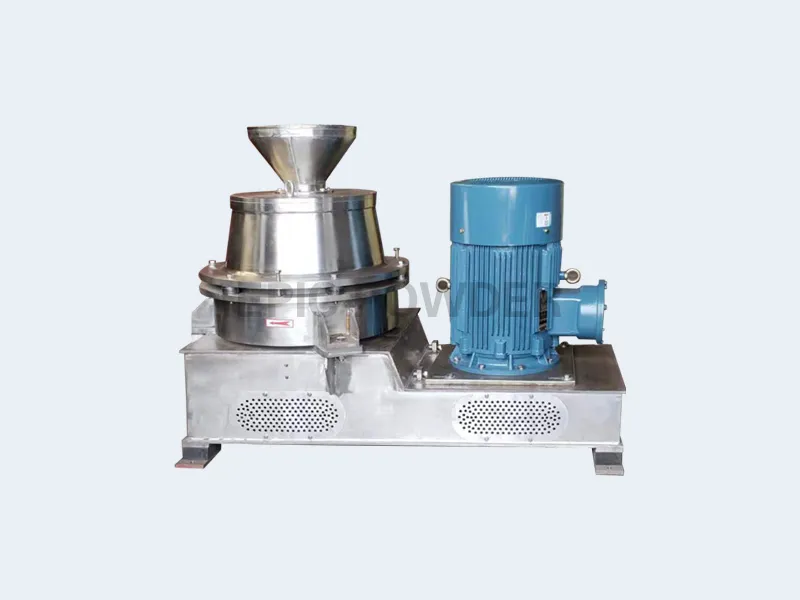
Conclusion
The key to selecting the appropriate ultrafine powder milling process and equipment lies in thoroughly understanding the material characteristics, production requirements, and product specifications. By considering factors such as grinding efficiency, particle size distribution, energy consumption, and equipment maintenance, the most suitable process and equipment can be chosen to improve production efficiency, reduce costs, and ensure product quality.
Epic powder
Epic Powder, 20+ years of work experience in the ultrafine powder industry. Actively promote the future development of ultra-fine powder, focusing on crushing,grinding,classifying and modification process of ultra-fine powder. Contact us for a free consultation and customized solutions! Our expert team is dedicated to providing high-quality products and services to maximize the value of your powder processing. Epic Powder—Your Trusted Powder Processing Expert !
